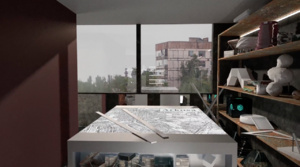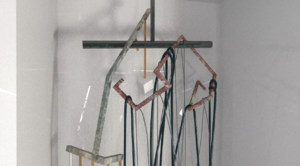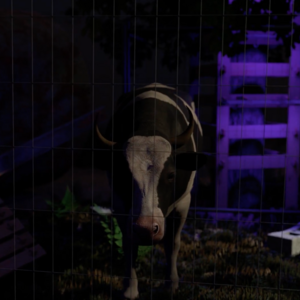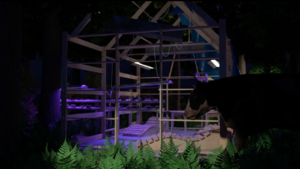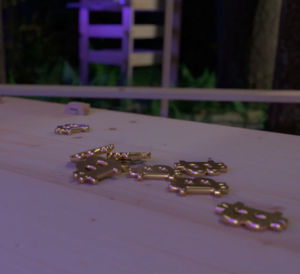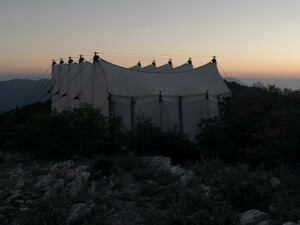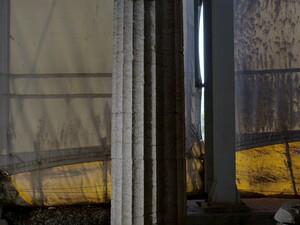Benjamin Fraboulet
Elliot Eugénie
Fabien Giraud & Raphaël Siboni
Flashfoward : n.m., a short sequence which, by projecting itself into the future, gives the viewer a glimpse of the rest of the narrative.
FLASH
The layout of the so-called landscaped or English gardens in the 18th century was built entirely in reaction to the French-style garden layout that dominated in the 16th and 17th centuries. When the latter was designed with a compass and according to centuries-old canonical proportions, the English garden that succeeded it artificially ensauved the parks with amenities: winding paths, artificial reliefs and caves, opulent foliage, all often punctuated with factories, small buildings to embellish the course – oriental pavilions, Greek temples, true-false ruins of all kinds etc…. – Where the formal garden asserts man’s domestication power over nature and the pleasure taken in the right proportions and rectitude, the landscaped park gets inebriated by the languid curves of its walks, the dampness of its undergrowth, the delicious fright caused by its views down on ruined castles. He exalts the frightening power of the sublime against the measured pleasure of the beautiful, characteristic of the landscaped style that comes before him. Leaving behind the pure geometry and spatial layout of a canon thought to be anhistorical, the English-style garden plunges ecstatically into history, and revels in the picturesque artifacts that it stages in an astonishing civilizational polyphony.
One of the most famous of these parks in France is called the Désert de Retz, its name referring to the ancient meaning of the term, when the desert refers less to an arid space, empty of vegetation and animated presence (human or animal),
but rather to wild areas, neither inhabited nor domesticated by man, in particular remote forests suitable for retreat, hermitage and meditation.
For the 18th century man, the edges of civilization offer a viewpoint from which to grasp, from the outside, what ordered the lives of men, the meaning of culture and the hidden purpose of history. The concomitant irruption of History – in place of the canon considered as anhistorical – and metaphysical meditation – by standing back from the course of things, outside the lives of one’s peers – brings with it the presence of heterogeneous times that look at each other through interposed ruins.
FORWARD
What is the translation for this territory separated from the eighteenth-century park in the enclosed space of the video frame? Here the motif of the neo-classical landscape ruin is re-informed by means of technique and film splitting for Bassae Bassae, science fiction and 3D simulation for Res Nullius and Odesya, anarhiya mati. The artefacts involved belong to indistinguishable temporal sequences, the succession of which is basically no longer certain. The objects are now looking at each other without knowing who’s ruin is whose, or even if the ruin is the result of effective aging or an arbitrary and immediate decision. The incessant back and forth between anticipation and retrospection end up in a kind of “retrocipation” that accomplishes their coincidence: the temporal flashing results in the crushing of its different sequences in a block that has become homogeneous again.
Clémence Agnez


